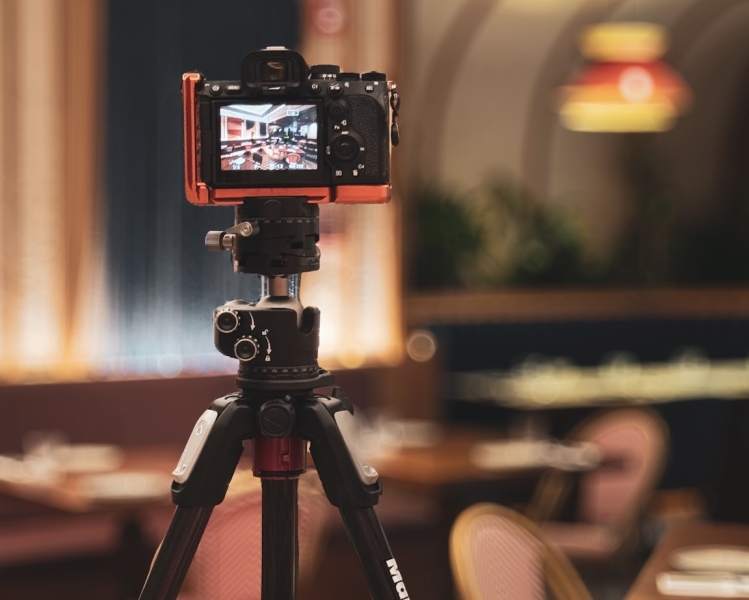Contents
Let’s admit it. Social media platforms now favor video content, and it’s not enough to just post your output anymore. Video content can be a way to tell potential clients more about what we offer, but it’s no walk in the park to produce.
Nowadays, no matter how much hate we have for social media platforms, photographers can’t just be photographers anymore. For any photographer, especially those who are still building their client base and aiming to reach more potential quality clients, being on social media and producing marketing content is necessary.
The Challenge To Produce Content
Personally, even as a content creator myself, it has always been a challenge to produce content while I shoot. I produce gear reviews and, as much as possible, prefer for these videos to be filmed while I’m testing out the gear in the right environment for them. At the same time, I need to produce some content that shows me doing my professional work so that clients have a better understanding of my creative process and whatever unique value I have to offer. For the longest time, my solution was to bring an extra set of gear and even an extra tripod to shoot behind the scenes while on location, and this has always led to either exhaustion, frustration, or both.
The Solution That I Ignored
360 cameras have been around for years, and while I’ve had my hands on a couple of them, I must admit that I didn’t take them as seriously as I do now. I’ve always thought that I couldn’t compromise on the quality of the camera that I use, and I must admit that that has led to a lot of failures in getting the work done. I’ve always said that done is better than perfect but failed to see the application of that in this sense.
I recently got my hands on the Insta360 X5 and tested it out extensively to see if what it offers can help me achieve my content goals better. Here’s what I think of this camera and the things that I assumed wrong about it.
The Insta360 X5
This new iteration of the Insta360 camera has quite a number of enhancements that make it even more usable beyond just casual use. It now makes use of a 1/1.28-inch sensor behind the two fisheye lenses, which is larger than the previous 1/2-inch sensor of the older model. It makes use of a 6mm f/2 equivalent lens on each side.
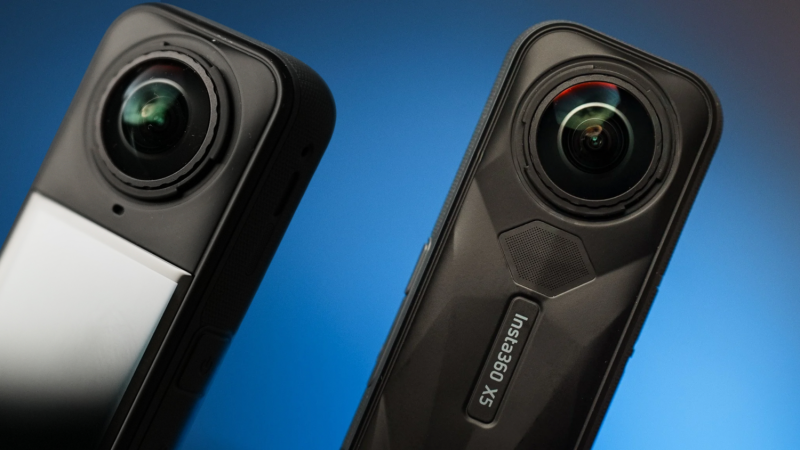
This camera is able to shoot up to 8K video at 30 fps or 5.7K at 60 fps and can produce 72-megapixel 360-degree still panoramas. The image resolutions for video range from 4K at up to 120 fps, 5.7K at 60 fps, 5.7K+ at 30 fps, and 8K at 30 fps.
Processing and Implications
Working alongside this dual camera is a set of three sensors—two Pro imaging sensors and a 5nm AI chip—that work together to process the output of both cameras for exposure and color.
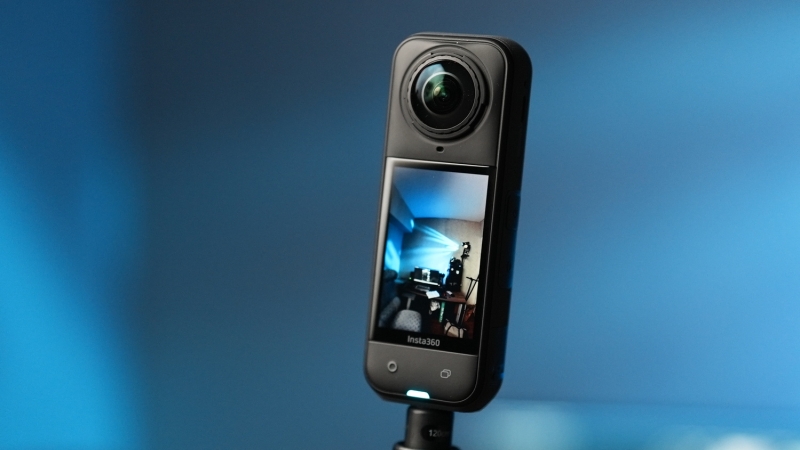
360 cameras are made up of two cameras with two fisheye lenses that produce two separate images with a bit of overlap, much like how we manually shoot panoramas. The biggest role of the processor is to seamlessly stitch together the two images/frames into a 360-degree photo or video. This is in addition to balancing exposures, especially when set on automatic exposure modes, and rendering out the colors in the scene.
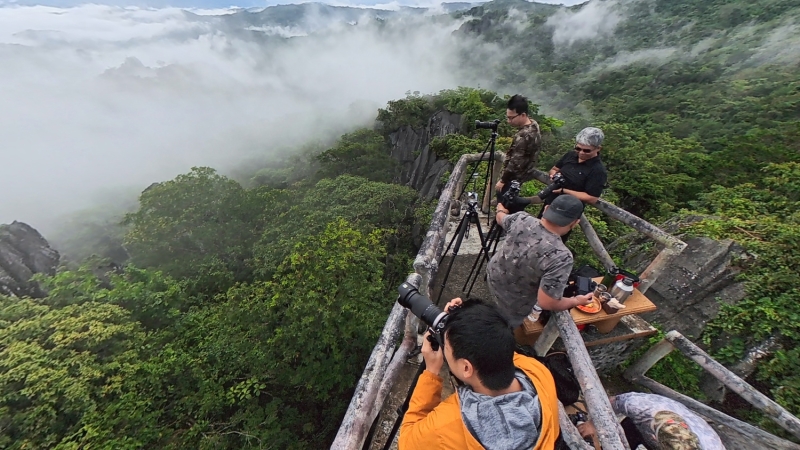
Beyond this, the camera already offers instant active HDR while recording at 5.7K resolution, which balances exposure in areas of the image—especially in high-contrast situations. The larger sensor offers a wider dynamic range natively, making HDR processing more flexible altogether. The triple processing chips also offer better low-light performance and processing when recording at night through PureVideo mode.
Build and Ergonomics
The Insta360 X5 takes the shape of an elongated bar with two fisheye lenses protruding on both sides of one end. It measures 4.9 x 1.8 x 1.5 inches and weighs 200 grams. It is wrapped in textured rubber for good grip, and its ports are covered by airtight seals to prevent moisture entry. On its own, the Insta360 X5 is waterproof to 15 meters deep and sufficiently sealed to resist moisture and dust.
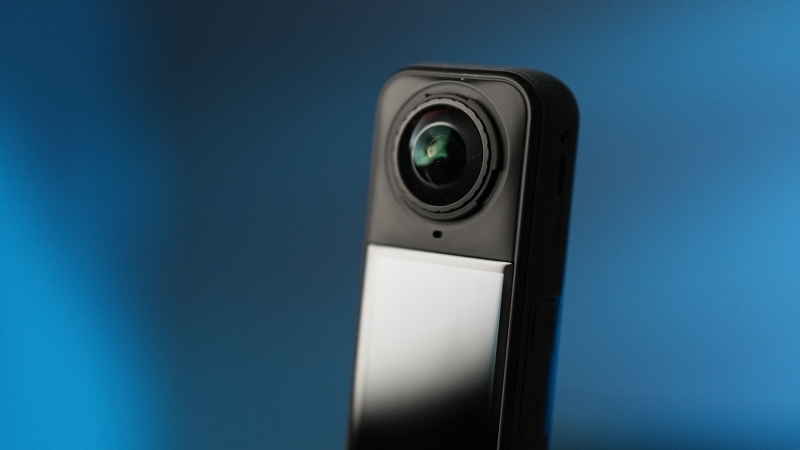
Below the front-facing camera is a 2.5-inch touch screen that allows for multi-point touch inputs for navigating around the 360-degree image. This is accompanied by a quick shutter button on the lower left and a mode button on the lower right, along with a shortcut button and the power button on the right side.
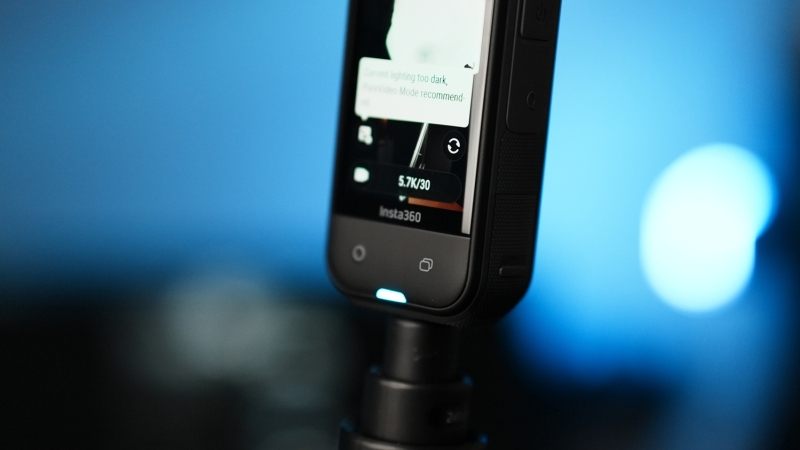
At first, it felt awkward to view and operate the camera considering the orientation of the screen and its positioning relative to the camera, but with use, you realize that it works regardless of where the lenses are pointed, and that the user is rarely meant to be directly in front of the screen while using it.
Workflow
Using the camera for behind-the-scenes and POV footage is as simple as placing it on your chosen mounting accessory and pressing record. Essentially, you only have to position the camera at the right height you’d like to get the perspective from and whichever direction you want it to shoot.
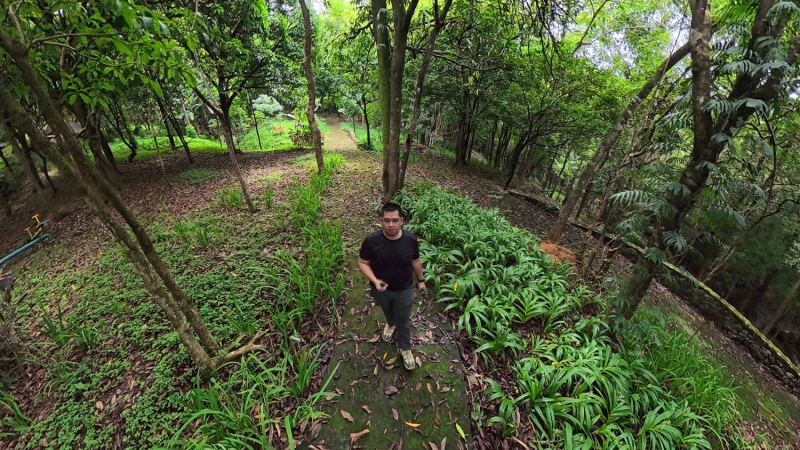
The processor automatically erases anything continuously aligned to its long axis, making the selfie stick or extended pole automatically invisible and creating the impression that you’re being filmed independently.
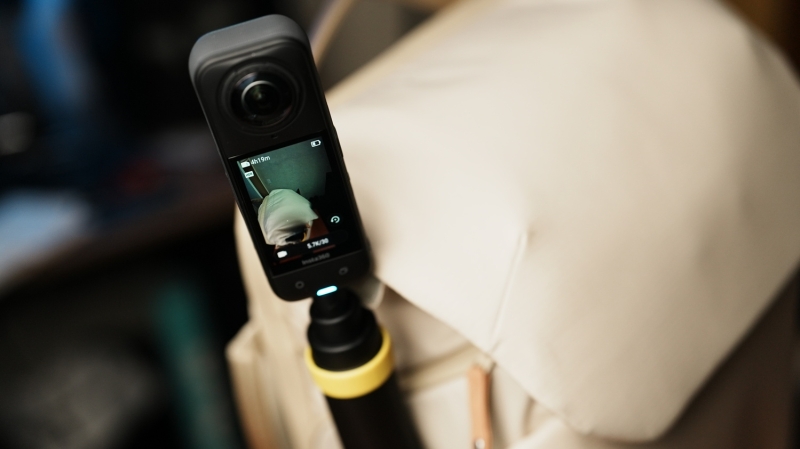
Recording in 8K at 30 fps allows you to maximize the resolution, reframe, and even zoom in when editing without compromising image quality. However, recording at lower resolutions allows you to use active HDR and achieve better stabilization, so being more intentional with positioning the camera can reward you with better-looking footage and movement.
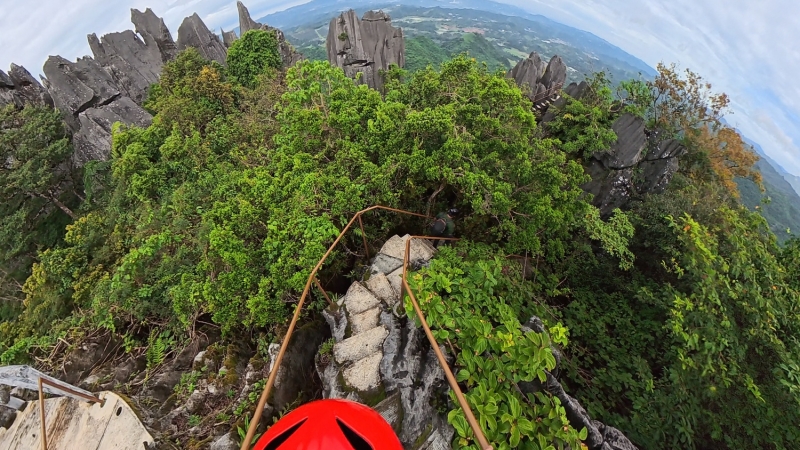
Personally, for handheld shooting, especially outdoors, I found it convenient to place the camera on a pole secured in the side pocket of my camera backpack, slightly extended and, if possible, slanted away from my body. This allows me to shoot with both hands while still getting continuous behind-the-scenes footage for any future content use.
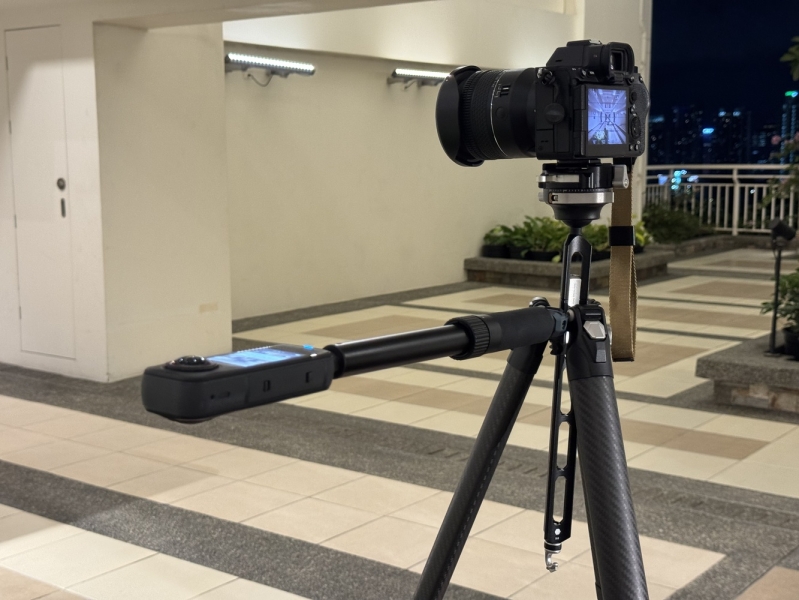
When shooting with a tripod, the solution I found is to mount the invisible selfie stick onto one of the 1/4-inch threaded accessory ports that are now found on most tripods and extend it 1–2 feet away from the camera. This gives me a relatively less distorted image that can also include me while I’m shooting. Since the reframing of the 360-degree footage is done in post, I can have the footage pan from side to side to also show viewers what I am shooting and the environment I am in. However, for anything that involves a lot of movement—especially if you don’t want to edit the clips too much afterward—the AI framing and tracking can be very useful.
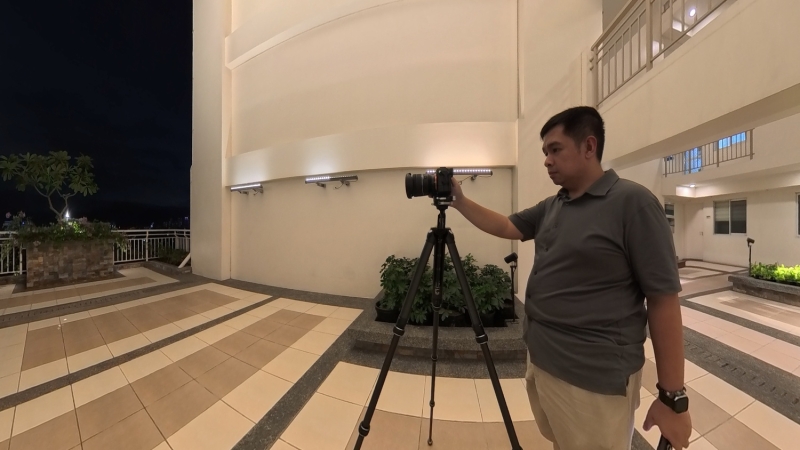
360 cameras are very popular among people who travel and do various outdoor activities, but they can also be beneficial for photographers and videographers. While they serve a very different purpose from larger cameras, they can aid us in providing a different perspective from 360 different angles of our work. You can purchase yours here.
What I Liked
-
8K maximum resolution
-
Intuitive processing for stitching and AI framing
-
Durable and waterproof build with easily replaceable lenses
-
Quick, seamless recording workflow with easy reframing in post
What Can Be Improved
-
Quick-release mechanisms for the mounting tools
-
Perhaps a variant with an even larger sensor for even better low-light performance
